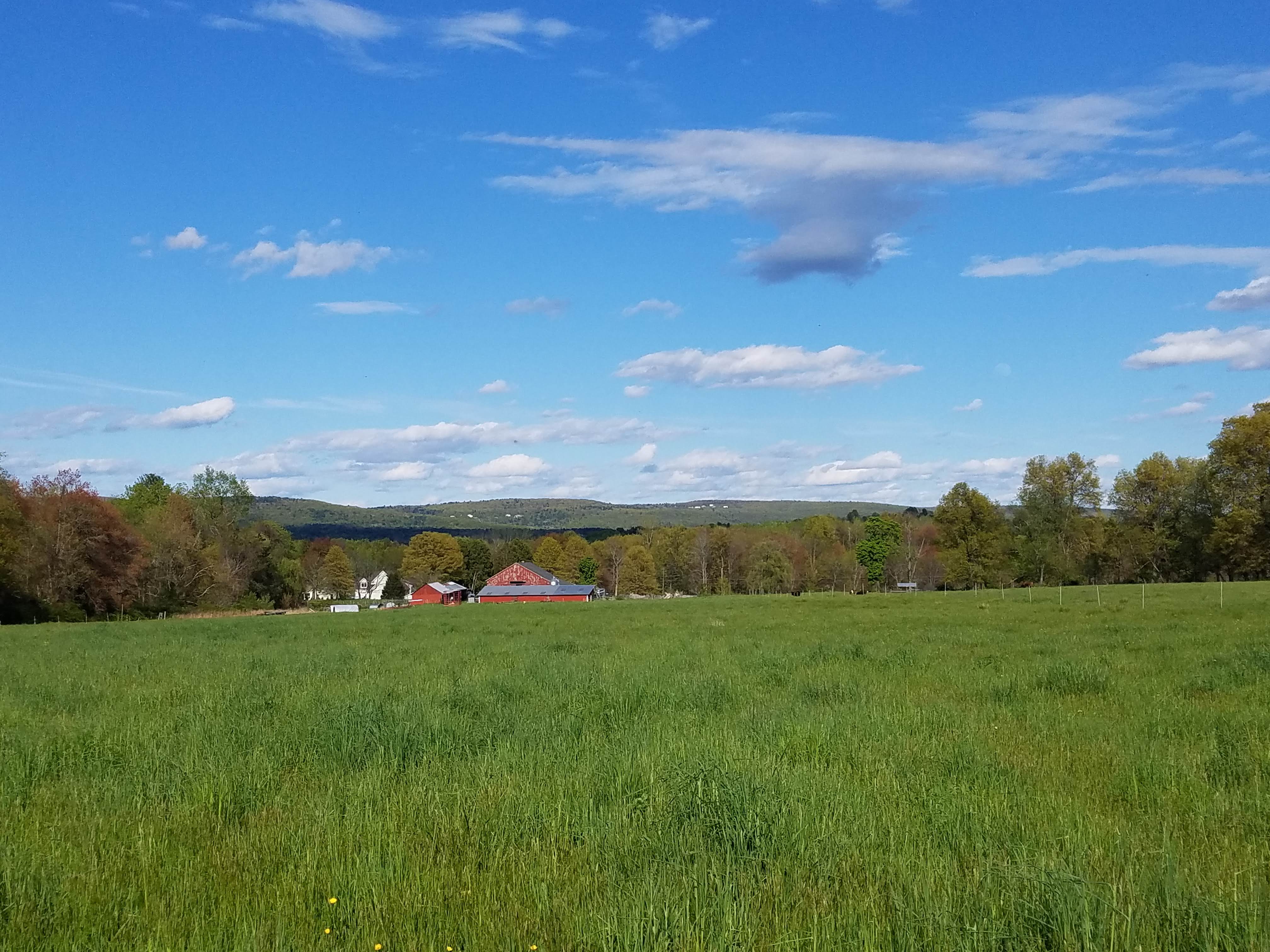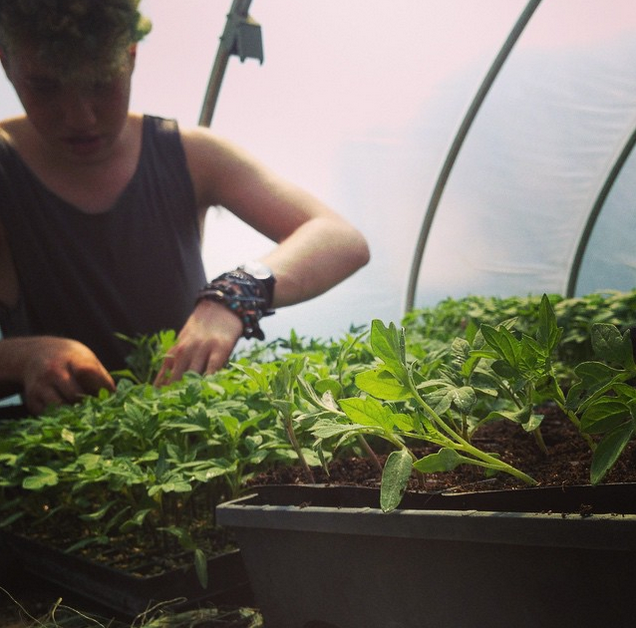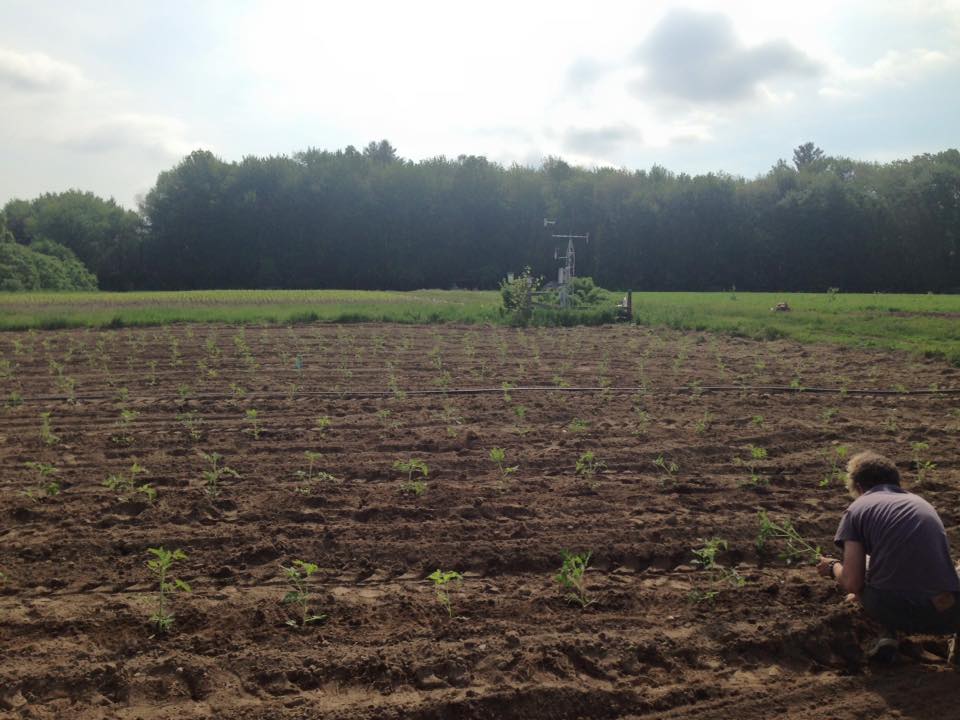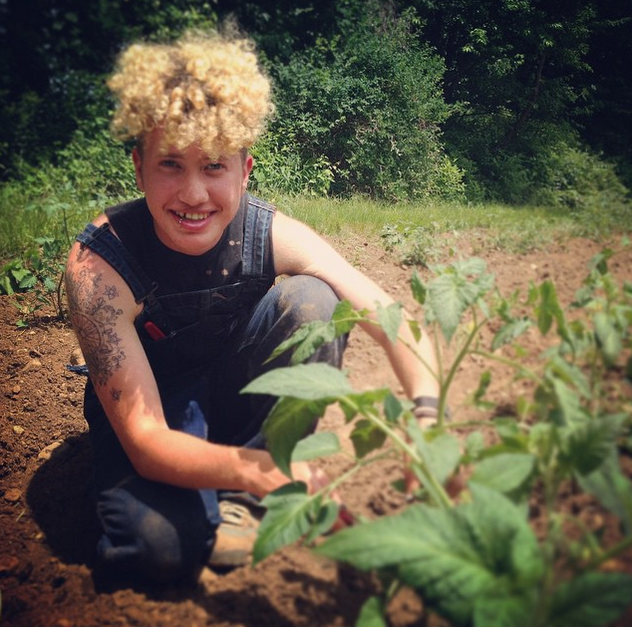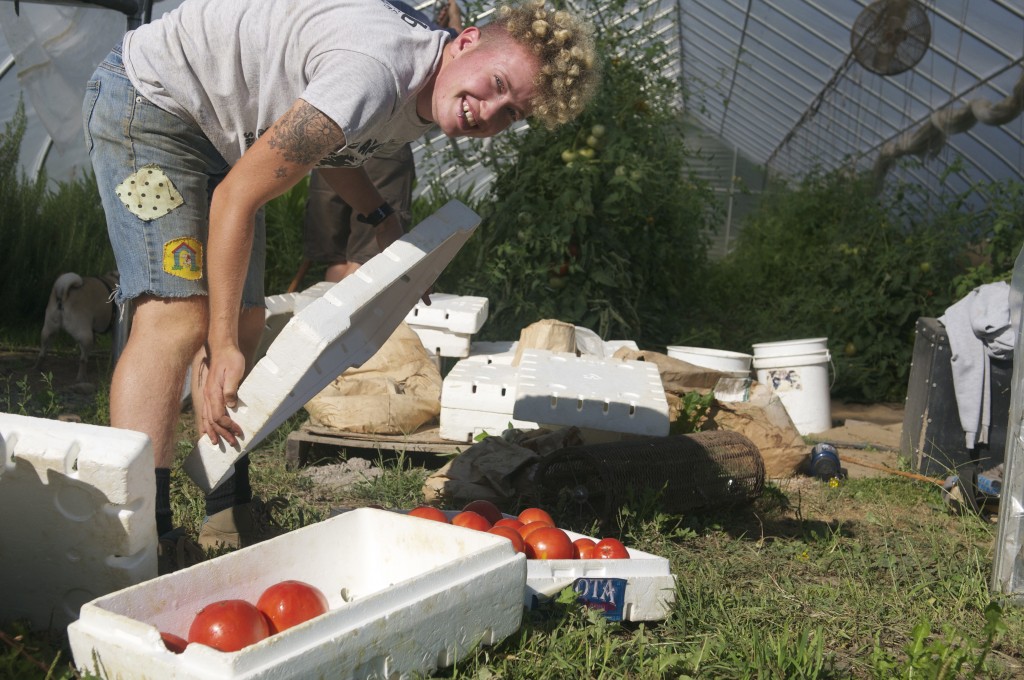Owen Aptekar-Cassels is a third-year student at Hampshire College and one of 4 Hampshire students who worked as a vegetable farm intern this summer.
I’ve been meaning to write this blog post for months, but I’m only now, when popcorn and pumpkin plants that started off so small and strong are now fruiting and dying back, getting the chance to write it. Farming can make other things slip to the side, I’m learning. My summer of full-time farm work has been a busy and hard one, with blisters and muscle aches and bug bites and sweat-bleached shirts and 9pm bedtimes, but also in a lot of ways a beautiful and rewarding one, with spiderwebs covered in morning dew, sunrise colors over the cornfield, angular llama legs protruding from a layer of fog and, eventually, the colors and textures of buckets and crates full of food we grew.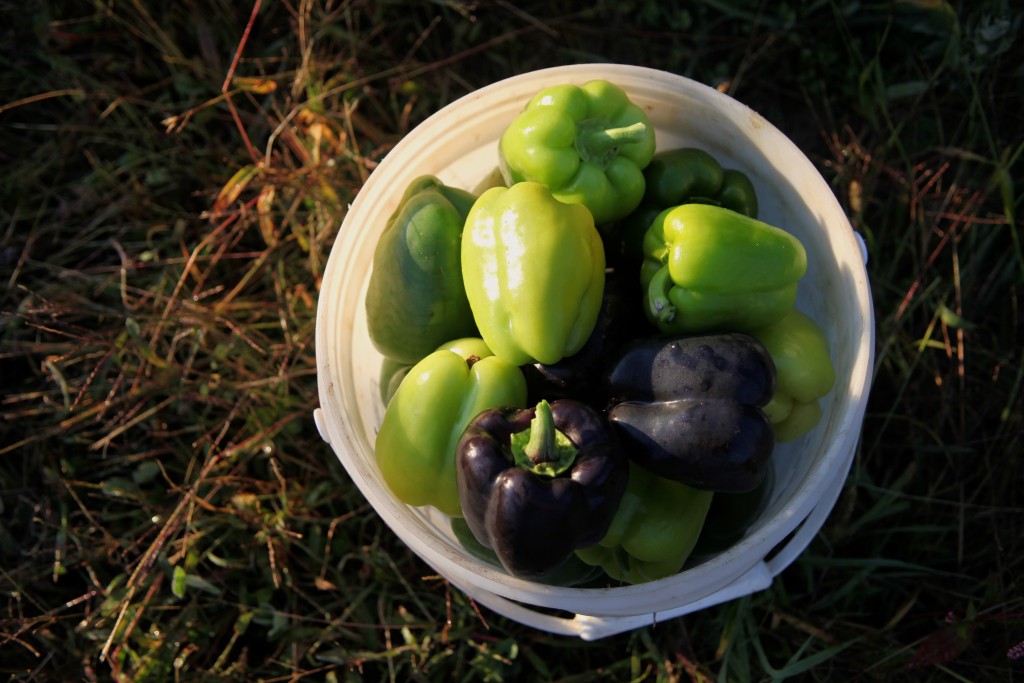
Every morning, unless I catch a ride, I wake up at 5:30 and get ready to bike to the farm. I eat some toast, cream cheese, and a hard-boiled Hampshire farm egg for breakfast, to make sure I have some protein to keep me from getting too hungry in the field. Days spent out in the sticky humid heat or in bursts of rain and tumbling thunder can feel long, and everything we grow takes a lot of work and tending, more steps and time than I knew.
There is a rhythm to what we do on the farm, though the rhythm flexes and changes constantly in response to the weather, disease, or equipment breaking. In the spring, before all the snow had melted, I helped fill trays with soil and plant seeds in them, different depths for different seeds, filling the greenhouse over the course of a couple months with tiny plants that need thrice-daily watering. Some get moved into larger pots, some get fed fertilizer if they start getting hungry in their pots before they can be planted – our days change according to the plants’ needs.
As danger of frost starts to pass, fields that were kept in a cover crop – something planted to outcompete weeds and hold the soil when crops aren’t growing – are mowed, and then turned under and rototilled a few times over the course of the weeks before they’re planted in. In the early summer, when we still often wore pants instead of shorts, we spent a few days a week transplanting our starts into the ground. We’d use tractors to drag the fields smooth and then make beds, hopefully straight. Drop compost and fertilizer for each plant, at the right spacing. Pop plants out of their trays, place them out in long lines, follow behind and plant them in the soil. All carefully, and all fast.
We move irrigation hoses when we need to, and spent a few days every week keeping back weeds, with tractor attachments, but also by hand. Good growing for crops also means good growing for weeds. We crawl along the length of all the beds of root vegetables and greens, getting all the tiny weeds by hand and talking about our lunches or the farm dogs or our dinners or Bruce Springsteen vs. Taylor Swift or breakfast or our feelings or whatever.
And a lot of farming is paying attention, too, so there wasn’t always time to think. There’s a lot of decision-making about what makes the most sense to do in what way – always trying to find the most efficient and effective way of doing things. Digging trenches for ginger, making sure tomatoes get pruned and trellised at the right time, remembering to take trash and compost bins out, cleaning things, fixing hoses, moving tractor attachments, mowing, putting up signs- a lot of the small things. Days are full and varied, but often with a job tangibly well done at the end.
It’s now the part of the summer where goldenrod and ragweed are out and jewelweed is forming pods. The air smells like the wild grapes that grow up through the trees surrounding the farm–sweet and perfumey.
We harvest into the same Styrofoam trays we used last year, though this year the crop is abundant and much less diseased. We’re harvesting thousands of pounds of beautiful tomatoes each week, and this time I’m coming away with not just a personal settling but also with a better understanding and appreciation of both how much time and work went into our crops here, and of the energy of the farmers and farm workers who have cared for and worked on the land that grows the rest of our food.
